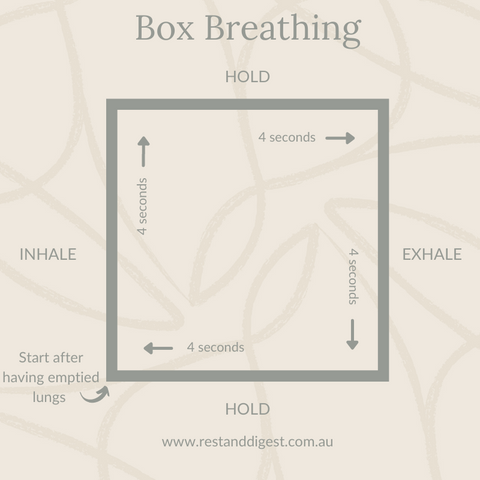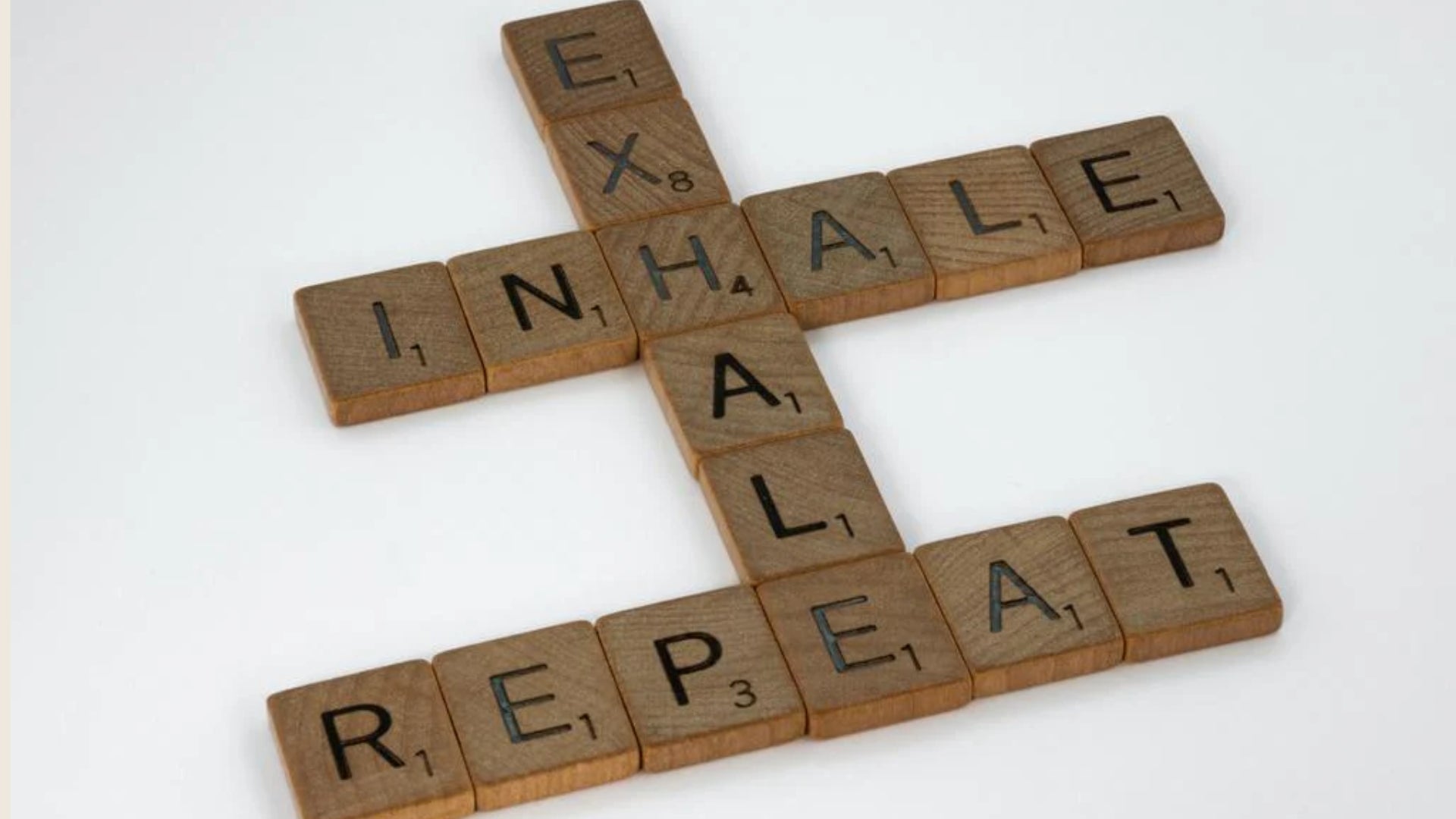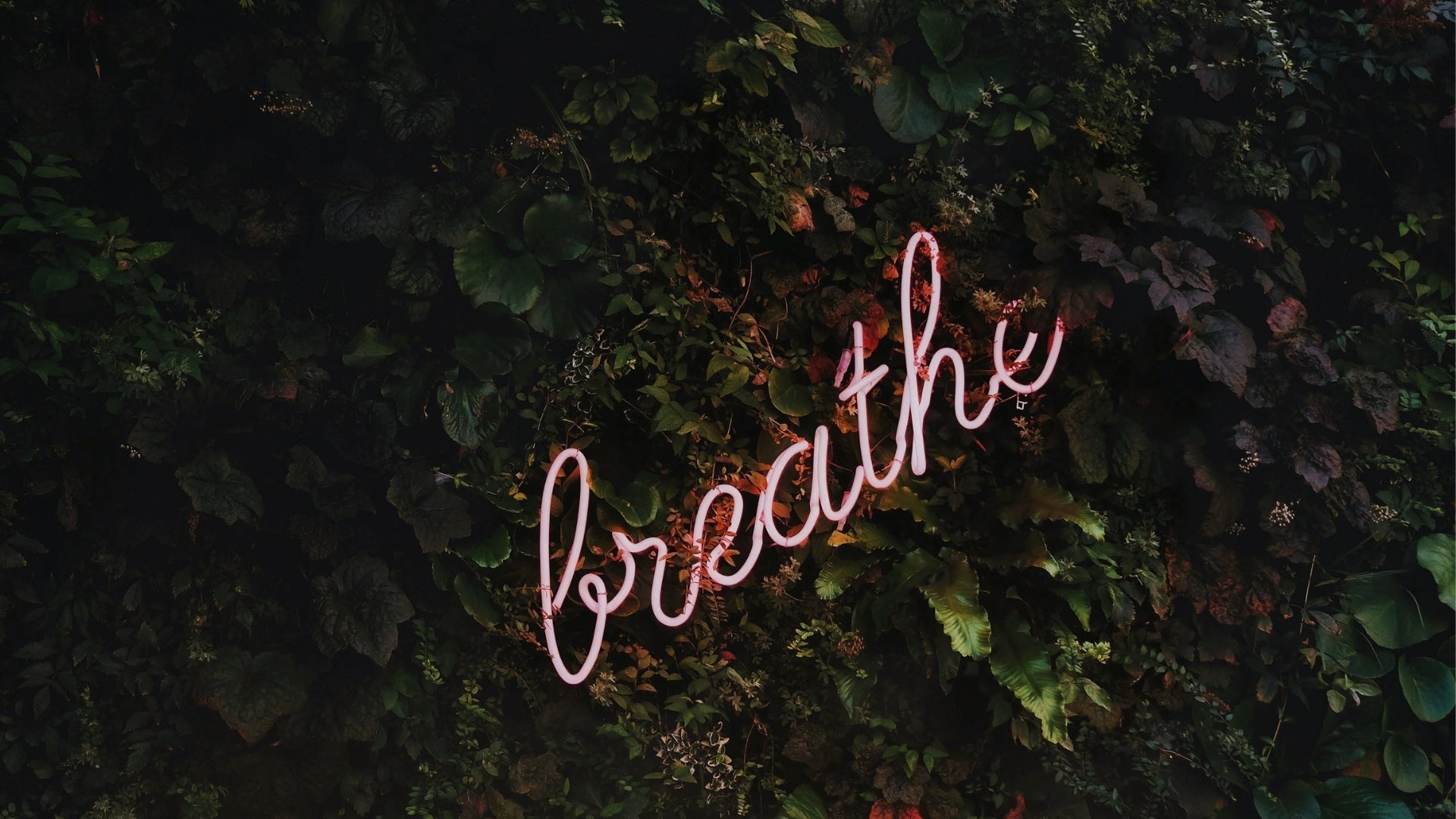Article: What is Box Breathing?

What is Box Breathing?
Box breathing is a type of deep breathing exercise in which you inhale for a set time, hold your breath for a set time, exhale for a set time, and hold your breath again. It's an efficient way to control anxiety or hyperventilation during times of stress and trigger the relaxation response - the parasympathetic nervous system. It is also known as square breathing or four square breathing.
It is a simple technique that can help you manage anxiety or panic. It has also been found to improve mood and sleep quality and lower blood pressure in addition to reducing the symptoms of asthma.
Box breathing is also known as sama vritti pranayama which is translated to equal breath or even breathing. Box breathing is not a single cohesive technique, but an umbrella term for several different ways to breathe that each have specific characteristics.
The most common one is the four-square breath, which consists of inhaling to a 4-count (four seconds), holding the air in your lungs for 16 seconds, exhaling over another 4 counts, and then holding empty lungs for 8 more seconds.
The purpose of box breathing is to encourage deep diaphragmatic breathing rather than shallow breathing in the upper chest or throat breathing. It does this by creating a stable pattern upon which you can begin to build additional patterns.
Why box breathing?
The idea behind this deep breathing method comes from yoga but it has been used by the military and navy seals as well to help soldiers get through stressful situations like battle trauma without panicking.
It is one of the breathing techniques that can be used to quickly regulate your sympathetic nervous system response and activate your parasympathetic nervous system.
Why do Navy SEALS use Box Breathing?
Box breathing is a powerful tool used by Navy Seals to manage high stress situations. It also assists in increasing:
- tolerance to oxygen deprivation
- mental focus and clarity
- heart rate variability
- energy
- better decision making
Seal Training
Mark Divine - a former Navy Seal and martial artist - is one well known proponent of this breathing pattern. In fact, on his website, he states that he coined the term box breathing. He claims that if you practice this technique daily for three minutes, it can significantly improve your performance.
How to practice box breathing?
The first step in the box breathing technique is to make sure you are sitting upright, on the floor on a yoga block or in a chair. Your feet should be flat against the ground and your hands can rest palms up on top of each other on your lap (or if they can’t stay like this for too long without getting tired, simply lay them down at your sides).
You may find that you prefer to do this diaphragmatic breathing laying down. In my opinion - as with all breathing exercises - it is most important that you choose a position in which you are comfortable.
If you are comfortable with your eyes closed, this may enhance the practice.
Perform Box Breathing
Start by breathing out slowly and emptying your lungs
- Inhale slowly, taking a deep breath through your nose counting from one to four;
- Hold the breath for a count of four
- Slowly exhale through your mouth counting slowly from one to four.
- Hold the breath out for a count of four before starting over again with step one.

When you are finished, you should have completed five full rounds of inhaling, holding, exhaling and holding (one cycle). Try doing at least three cycles when you first begin practicing box breathing every day until it becomes more natural or if stress levels start to rise throughout the day.
Visualising drawing a box while breathing in and out can help with the counting if you are having trouble keeping track. For example, as you are inhaling, imagine an imaginary line being drawn starting from a point in space and going up. On your hold, draw the line from where you finished across to right. Then do the same thing for your exhale. Follow the line down and on the next hold, close the box by drawing the imaginary line to where you started.
As with all relaxation techniques, I suggest that when you start, if you find that counting to four is too long for you, start at a lower count or count a bit faster. You can build up to a higher count as time progresses and you feel more comfortable with the practice.
Box breathing and the Nervous System
Box breathing is one of the best over all techniques for activating your parasympathetic nervous system. This means it can be very helpful especially if you struggle to bring your heart rate down when it starts to race, or elevate your stress levels after a long day at work.
Sympathetic Nervous System
When you are stressed out, frightened or anxious, the sympathetic side of the autonomic nervous system takes over placing us in "fight or flight". By using box breathing, we can activate our parasympathetic response which will help calm us down, bring down our heart rate and lower our stress levels.
The Role of the Amygdala in Square Breathing

There is a part in our brain that deals with the body's fight or flight response. It's called the amygdala and its job is to monitor your breathing, heart rate, blood pressure etc. when you are in a high stress situation.
This makes sure that you still have enough oxygen circulating throughout your systems while preparing for danger (fight) or fleeing from it (flight).
Breathing and Stress Hormones
This part of our brain doesn't differentiate between real life dangers like being attacked by an animal on a hike through nature or perceived dangers like worrying about what people think of us while attending networking events where we might feel out of place. When this area becomes activated, breathing will become faster due to increased levels of stress hormones which can lead to hyperventilation if not managed properly.
Box breathing allows one to control their breathing by counting out breaths which will force the amygdala to calm down, thus reducing stress levels and anxiety and put us in our rest and digest phase.
Benefits of Box Breathing
Anxiety
Anxiety is common for many people and it’s important to learn how to control symptoms so they don’t hinder your daily life or cause other problems that require medical attention. Box breathing has been shown through scientific studies to have an immediate effect on brain activity, lowering stress hormones like cortisol while increasing serotonin levels which boosts mood and reduces anxiety symptoms.
Long term benefits of deep breathing
If done regularly, this method of using deep breaths can also provide long term benefits even after just a few weeks by helping regulate heart rate variability (HRV). HRV refers to the time between each heartbeat; when someone experiences lower than average variability, they are at a higher risk for heart disease and cardiac arrest
Another reason for the wide range in heart rate is due to our nervous system. Your parasympathetic nervous system receives input from your organs, which can cause a drop in your heart rate. The sympathetic nervous system, on the other hand, reacts to external stimuli such as exercise and stress and can raise your heart rate.
Stimulation from the branches of our nervous system sends signals to our heart, causing it to fluctuate and significantly affecting your heart rate variability scores.
Prevention is better than cure
It is recommended that people who suffer from anxiety-related disorders do this exercise whenever they feel symptoms coming on instead of waiting until their anxiety, panic attacks or hyperventilation become unmanageable. It is a powerful tool to add to your stress management tool box.
Relieve Stress
There are many benefits of box breathing. Chief among them is that box breathing is a simple breathing technique used to regulate the nervous system that anyone can use to reduce stress and anxiety symptoms. It's recommended for those who have been diagnosed with an anxiety disorder or PTSD but it also helps regulate HRV and manage stress if done regularly which benefits all people, not just those going through difficult times in their life.
When you first start out, doing three cycles of four deep breaths may be challenging - especially if you are used to not breathing well - but keep practicing every day until it becomes easier then build up from there until you reach five cycles. Will practicing box breathing be one of the deep breathing techniques you look at doing?




